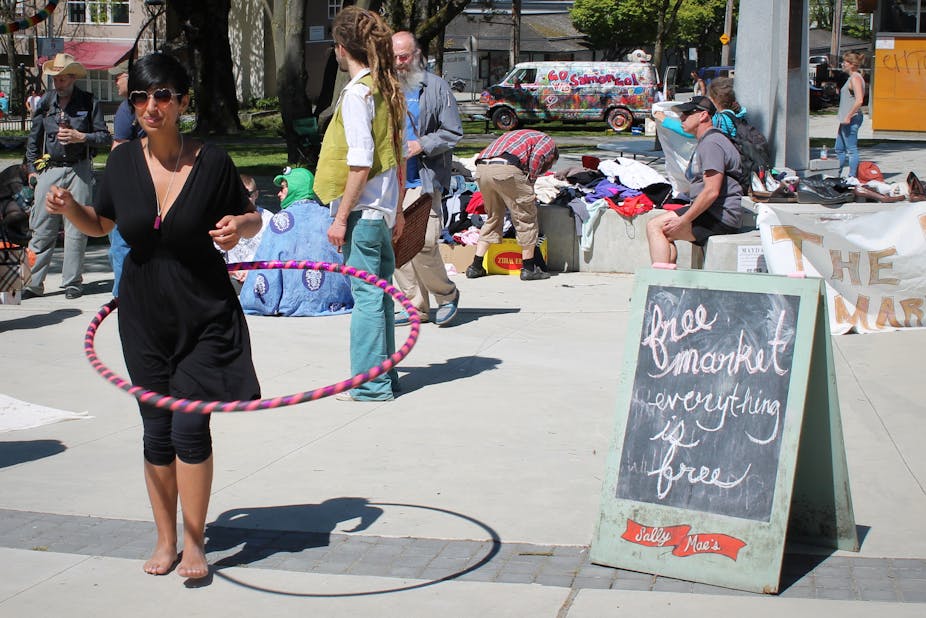Adam Smith’s Wealth of Nations (1776) is often called the Bible of capitalism. Like the Bible, it is not known for careful arguments based on detailed data, but rather for its powerful myths, and also its use of parables, as outlined in a previous article.
Smith’s success is due to his ability to construct a comprehensive story that claims the reader’s assent. The central myth begins as follows:
In a tribe of hunters or shepherds a particular person makes bows and arrows, for example, with more readiness and dexterity than any other. He frequently exchanges them for cattle or for venison with his companions; and he finds at last that he can in this manner get more cattle and venison, than if he himself went to the field to catch them. From a regard to his own interest, therefore, the making of bows and arrows grows to be his chief business, and he becomes a sort of armourer.
Another excels in making the frames and covers of their little huts or moveable houses. He is accustomed to be of use in this way to his neighbours, who reward him in the same manner with cattle and with venison, till at last he finds it his interest to dedicate himself entirely to this employment, and to become a sort of house-carpenter.
In the same manner a third becomes a smith or a brazier; a fourth, a tanner or dresser of hides or skins, the principal part of the clothing of savages.
The key feature of this peaceful, even Edenic, tribe is the disposition to truck, barter, and exchange – a disposition that leads to different talents and professions. Further, the same disposition ensures that the different professions are of some use to one another, brought “into a common stock, where every man may purchase whatever part of the produce of other men’s talents he has occasion for”. The myth continues a little later:
When the division of labour has been once thoroughly established, it is but a very small part of a man’s wants which the produce of his own labour can supply. He supplies the far greater part of them by exchanging that surplus part of the produce of his own labour, which is over and above his own consumption, for such parts of the produce of other men’s labour as he has occasion for. Every man thus lives by exchanging, or becomes in some measure a merchant, and the society itself grows to be what is properly a commercial society.

Our primitive forebears were capitalists at heart, natural merchants in the business of specialisation, producing surpluses, and constantly exchanging them.
Smith can be long-winded, so let me summarise the remainder of the myth.
Once our advanced forebears have busied themselves with their natural propensity to produce and “truck,” they soon find that others have enough of whatever is on offer. For example: I may have made plenty of back scratchers, but now that the tribe is full of aforesaid scratchers, I have nowhere to hawk my wares.
The solution: stockpile items everyone will want – salt, sugar, dried cod, back scratchers – so that when I want something, I can exchange these items.
Given the cumbersome nature of these items, someone comes up with the idea of using precious metals for such a purpose, at first weighed, but then standardised and minted as coins. Eventually, in our wisdom, we invent credit, or virtual money.
Smith repeats variations of this favoured myth on numerous occasions.
So powerful has this myth become, economists following in Smith’s wake repeat it ad nauseam. In economics textbooks, online forums, and classes on economics, “the most important story ever told”, in David Graeber’s words, has been retold again and again.
There is one problem: it is pure fantasy.
Where is this mythical village or tribe? Does it exist among North American Indians, Asian pastoral nomads, African tribes, Pacific Islanders, Greenlandic hunters, Australian Aborigines, or a small Scottish town of shopkeepers?
Is it limited to the past, or does it appear in some remote place today? Often in the same myth it moves from one place or time to another, producing an ethnic other as it does so.
But the simple fact is that this tribe or village never existed. No such community has ever been found, nor will it be, for it is the product of Smith’s imagination.
While it is necessary to point out the mythical status of this story and counter it with empirical evidence, such an approach is ineffective. No amount of “facts” will dent the power of myth, as Georges Sorel showed in his Reflections on Violence (1908). Instead, we need to ask what truth the myth expresses, given that myth is always split between fiction and a deeper, not always pleasant, truth.
I suggest the function of Smith’s myth is to create a new entity, a projection that that must gain an existence all to itself. This is “the economy,” or more specifically “the market”. Here the epithet “free,” attached to “market” is a crucial signal, for the market should be – as a pure project – free from any ties.
And the reason why such a projection was needed was because a relatively new discipline – classical economics – needed an object of study.
This is the second in a series of three articles by Roland Boer on Adam Smith. Read the first here.

